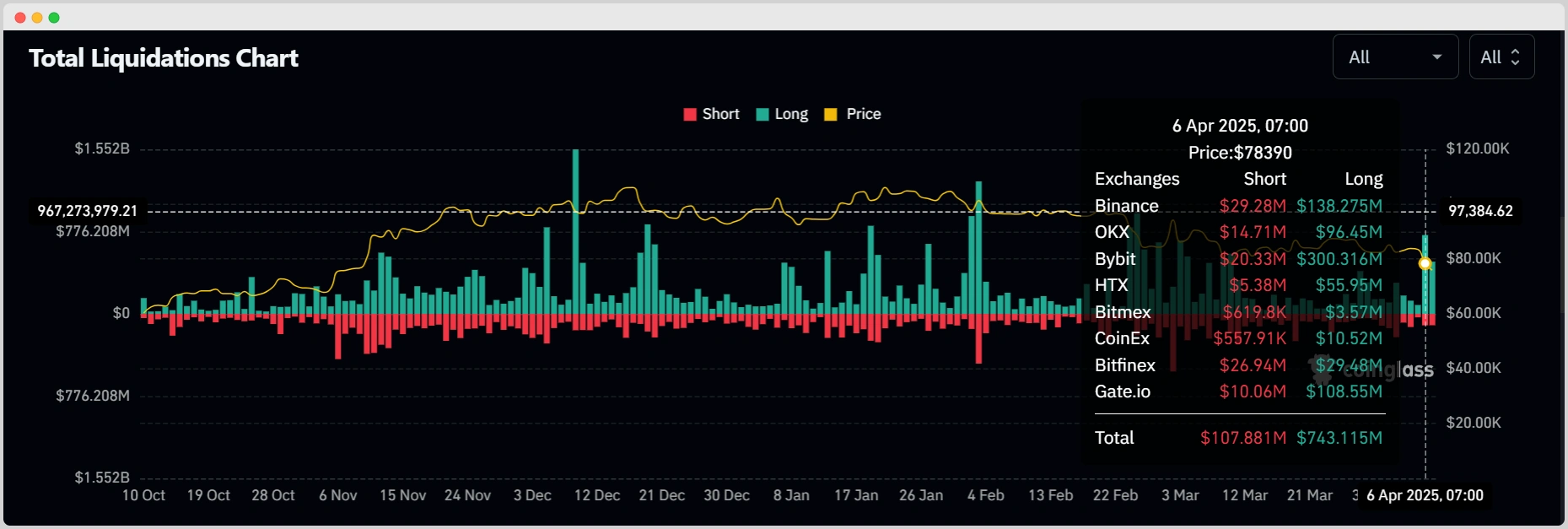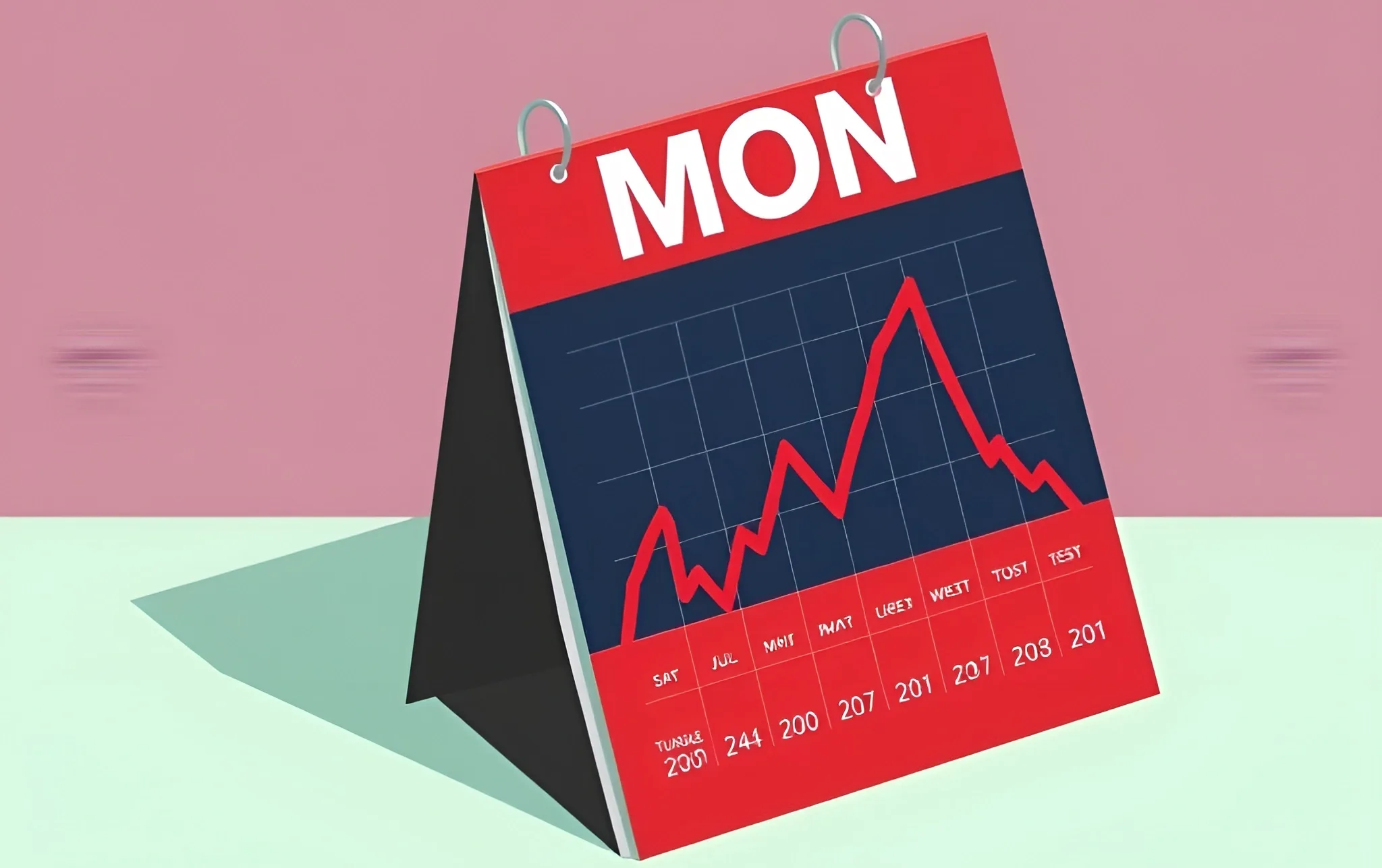Crypto Black Monday 2025: Strategies and Opportunities
Crypto Black Monday 2025 was a critical point for the crypto market, triggered by a mix of macroeconomic shock and internal weaknesses. In this article, we will break down the impact, and the opportunities behind this downturn event.
Key Takeaways:
Hide- Beincrypto: Crypto Black Monday (April 7, 2025) saw over $1 trillion wiped from the crypto market in a single day, with Bitcoin dropping ~8% and Ethereum over 12%. [Source]
- Economictimes: The crash was triggered by geopolitical tension, particularly U.S. tariff announcements by the Trump administration, leading to a global risk-off sentiment. [Source]
- Economictimes:Regulatory uncertainty over U.S. stablecoin legislation added to market fears, potentially impacting liquidity tied to Tether (USDT) and USD Coin (USDC). [Source]
- Beincrypto:Nearly $1 billion in leveraged crypto positions were liquidated over 48 hours, with 320,000+ trader accounts wiped out, amplifying the crash. [Source]
- Chainalysis:Retail investors were the most vulnerable, often panic-selling or being liquidated due to overleveraged trades. [Source]
- Decrypt:Institutional investors and long-term holders (HODLers) largely held firm or used the crash as a buying opportunity. [Source]
- Beincrypto:Active traders attempted to profit from volatility, but many were wiped out due to the speed of the downturn and margin calls. [Source]
- Investopedia:Crashes often create long-term opportunities: undervalued assets, market resets, stronger regulatory clarity, and improved psychological discipline among investors. [Source]
- NPR:Historically, all major crypto crashes have eventually been followed by recovery and new all-time highs, patience and discipline remain key. [Source]
Crypto Black Monday 2025: What is it?

The term Crypto Black Monday refers to a sudden and severe downturn in the cryptocurrency market that took place on April 7, 2025.
Within 24 hours, the total market capitalization of all cryptocurrencies plummeted by over $1 trillion, representing a staggering 10%+ decline.
Major cryptocurrencies like Bitcoin (BTC) and Ethereum (ETH) dropped sharply, with Bitcoin losing about 8% and Ethereum plunging over 12% in a single trading session. Altcoins, including XRP, suffered even steeper losses.
The Origin of “Black Monday”
The phrase “Black Monday” dates back to October 19, 1987, when global stock markets crashed.
The Dow Jones Industrial Average dropped 22.6% in a single day, the largest one-day percentage decline in its history.
Several contributing factors, such as overvaluation, computer-driven trading (program trading), and investor panic, led to this historic sell-off.
It marked a turning point in financial history and led to the introduction of circuit breakers to temporarily halt trading during steep declines.
Over the years, the term has evolved. Investors and analysts now use “Black Monday” to describe any unusually sharp market drop occurring on a Monday.
The crypto community has adopted the phrase to capture significant single-day crashes, like the March 2020 “Black Thursday” during the COVID-19 panic and now the April 2025 “Crypto Black Monday.”
Causes Behind the April 2025 Crypto Crash

The crash on April 7, 2025, was the result of multiple intersecting factors:
1. Macroeconomic Shock
The immediate catalyst was geopolitical: a new round of U.S. tariffs announced by the Trump administration rattled global markets.
This protectionist policy prompted a risk-off sentiment, pushing investors away from high-risk assets like cryptocurrencies.
Global equities also saw steep declines during the same period, reinforcing the interconnections between traditional financial markets and crypto.
2. Regulatory Uncertainty
The U.S. Congress was fast-tracking legislation aimed at regulating stablecoins, particularly Tether (USDT) and USD Coin (USDC).
The potential implications on liquidity and market functioning created widespread uncertainty.
Given that stablecoins are central to crypto trading infrastructure, any perceived threat to their stability or legality causes significant market anxiety.
3. Over-Leveraged Markets and Liquidations
High leverage is a hallmark of crypto markets. In the 48 hours leading up to April 7, nearly $1 billion in leveraged positions were liquidated, with the vast majority being long positions.
Over 320,000 traders’ accounts were liquidated in 24 hours. These cascading liquidations intensified the downward pressure, creating a feedback loop of forced selling.
4. Sentiment Collapse
Investor sentiment collapsed rapidly. Surveys showed bearish sentiment more than doubling its historical average.
Panic selling ensued, particularly among retail investors who lacked long-term conviction. Fear quickly replaced any remaining optimism in the market.
Investor Behavior During a Crypto Black Monday

Different types of investors react differently to market crashes. Here’s how they typically respond:
1. Retail Investors
Retail investors are often the first to panic. Many entered the market during bullish phases and lacked experience with major downturns.
During Crypto Black Monday, many small traders sold at a loss, and those trading with leverage were among the first to be liquidated.
2. Institutional Investors
Institutional investors tend to have more robust risk management frameworks. During the crash, they reduced exposure in a more controlled manner.
Some even viewed the downturn as a buying opportunity, especially for assets they deemed oversold but fundamentally sound.
3. Long-Term Holders (HODLers)
Veteran investors or HODLers held steady. Having experienced multiple boom-bust cycles, these investors viewed the crash as part of the long-term crypto journey.
On-chain data often shows little selling from wallets that have held Bitcoin or Ethereum for extended periods.
4. Active Traders
Day traders and short-term speculators saw both danger and opportunity. Those who had short positions or hedges in place profited.
Others, particularly those over-leveraged or slow to act, were wiped out. Trading volume surged as speculators tried to time rebounds or short further declines.
Tips During Market Crashes

Crashes are emotional and financially painful, but they also present moments for strategic reassessment.
For Retail Investors
- Avoid panic selling: Selling in fear often locks in losses.
- Reassess risk tolerance: Use the crash as a wake-up call to diversify and understand personal risk limits.
- Consider dollar-cost averaging (DCA): Gradually re-entering the market helps lower the average purchase cost.
For Institutional Players
- Reevaluate allocation models: Reduce exposure to highly correlated assets.
- Increase due diligence on projects: Focus shifts to quality, liquidity, and sustainability.
- Deploy capital strategically: Use downturns to accumulate strong assets at a discount.
For Long-Term Holders
- Hold the line: Historical data supports the long-term upside of Bitcoin and other major crypto.
- Accumulate selectively: Buy more when fear is high and prices are low.
For Active Traders
- Use protective stops: Protect gains and limit losses.
- Trade the volatility: Look for bounce trades or breakdowns.
- Monitor sentiment and liquidation data: These metrics provide a short-term trading edge.
Opportunities from Crypto Black Monday

While the short-term impact of a crypto Black Monday is painful, it often lays the foundation for long-term growth.
1. Undervalued Assets
Quality projects often get caught in broader sell-offs. This can provide unique entry points for disciplined investors. Crashes enable value-oriented buyers to acquire strong assets at discounted prices.
2. Market Reset
Excess leverage, speculation, and weak hands are flushed out during major downturns. This resets the market for healthier growth.
Following past crashes, surviving projects have often gone on to lead to the next bull cycle.
3. Psychological Fortitude
Investors who endure crashes gain mental resilience. They learn not to chase hype and to focus on fundamentals. Such experience is invaluable for long-term success in crypto investing.
4. Regulatory Clarity
Crises often accelerate regulatory efforts. While initially negative, this can lead to greater clarity and long-term institutional adoption.
The stablecoin legislation triggered by the 2025 crash may ultimately help the market mature.
Lessons from Crypto Black Monday 2025
Crypto Black Monday was a defining moment in digital asset history. It was triggered by a perfect storm of macroeconomic stress, regulatory uncertainty, and over-leveraged trading.
While it caused widespread losses and fear, it also served as a crucial market reset. History shows that every major crash, whether in equities or crypto, is eventually followed by a recovery.
Those who act strategically during downturns, rather than react emotionally, often come out stronger.
The key takeaway? In crypto, volatility is not a bug, it’s a feature. And for the prepared investor, even the darkest day in the market can offer a chance to reposition, learn, and ultimately build wealth over the long term.







